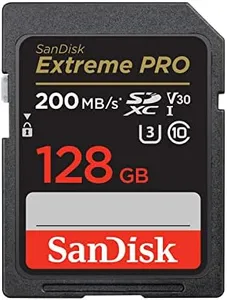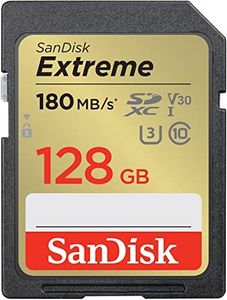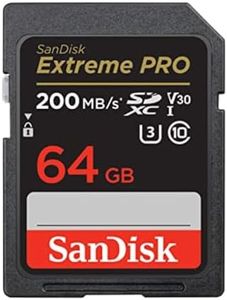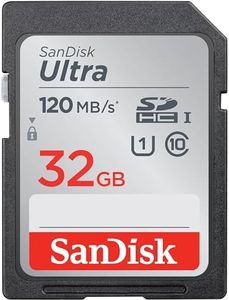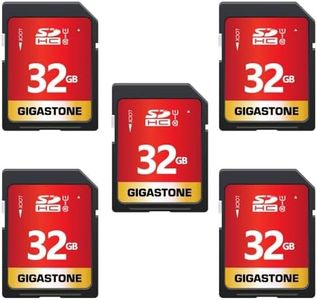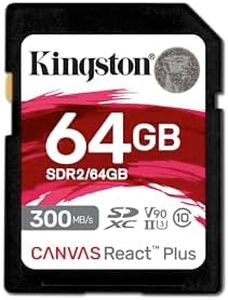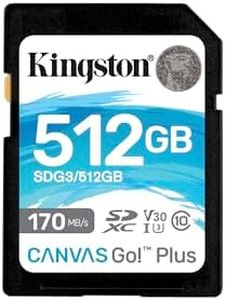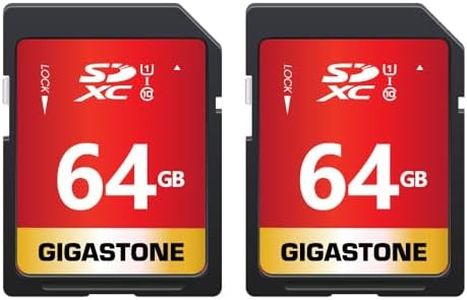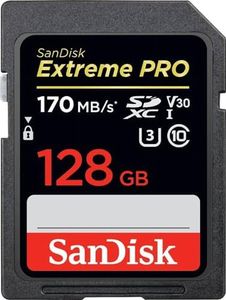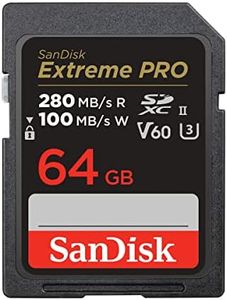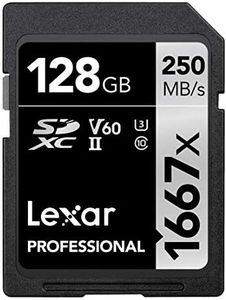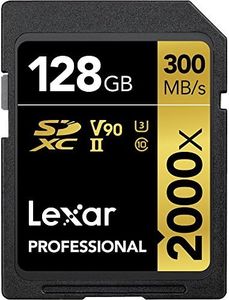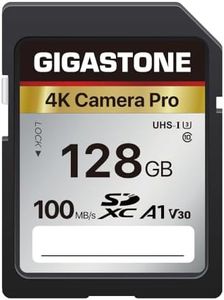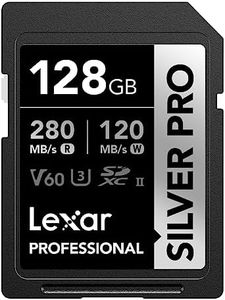We Use CookiesWe use cookies to enhance the security, performance,
functionality and for analytical and promotional activities. By continuing to browse this site you
are agreeing to our privacy policy
10 Best Sd Cards For Canon Cameras
From leading brands and best sellers available on the web.Buying Guide for the Best Sd Cards For Canon Cameras
Choosing the right SD card for your Canon camera is essential for reliable performance, smooth shooting, and protecting your valuable photos and videos. Not every SD card is suited for every camera or shooting style—your choice affects things like how fast you can take photos, how quickly files are saved, and what types or resolutions of video you can record. The best approach is to match the card's features to your camera's requirements and your photography habits.Card Type (SD, SDHC, SDXC)SD cards come in several types: SD, SDHC, and SDXC, each with different storage limits. SD cards hold up to 2GB, SDHC up to 32GB, and SDXC cards can store much more, commonly up to 2TB. It’s crucial to know which types your Canon camera supports, as older cameras may not read SDXC cards. If you take lots of high-resolution photos or shoot videos, a higher capacity card such as SDHC or SDXC is generally better. Always check your camera manual for compatibility before buying.
Storage CapacityCapacity refers to how much data the SD card can hold, measured in gigabytes (GB) or terabytes (TB). Lower capacities, like 8GB or 16GB, are fine for occasional photography, but can fill up quickly if you shoot in RAW format or record HD/4K video. Higher capacities, like 64GB, 128GB, or more, are better for heavy shooters or videographers. Consider how many photos or how much video you typically shoot and select a size that won’t require you to switch cards often.
Speed Class (Class 10, UHS-I, UHS-II, V30, V60, V90)Speed class shows how fast the card can write data, usually marked as 'Class 10', 'UHS-I', 'UHS-II', or Video Speed Class (V30, V60, V90). For still photography on most cameras, Class 10 or UHS-I cards work well, providing enough speed for burst shooting and quick saving. If you record HD or 4K video, or use high-end features like shooting in RAW bursts, a higher-speed card such as UHS-II or a Video Speed Class card offers better performance, reducing waiting times and preventing dropped frames in video. Check your camera's manual for recommended speed ratings for your usage.
Bus Interface (UHS-I vs UHS-II)Bus interface refers to how the card communicates with your camera. UHS-I and UHS-II cards look similar but UHS-II cards have an extra row of pins for much faster data transfer. If your Canon camera supports UHS-II, using that type of card speeds up photo transfers and high-speed shooting. If your camera only supports UHS-I, buying UHS-II cards won't provide any extra speed, though they're still compatible. Match the bus interface to your camera for the best results.
Durability & ReliabilityDurability describes how well the SD card handles tough conditions—some are waterproof, shockproof, or X-ray proof. This is important if you shoot outdoors or travel frequently, as your card may face harsh environments. Cards with extra protection are less likely to fail and risk losing your images. If you’re an everyday user and mostly shoot indoors or close to home, basic cards are fine. For adventure, travel, or professional work, a card marketed as durable or tough is a safer bet.

